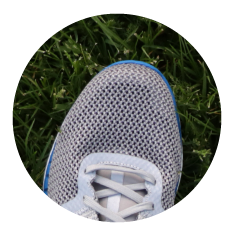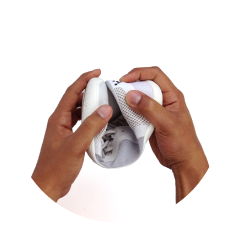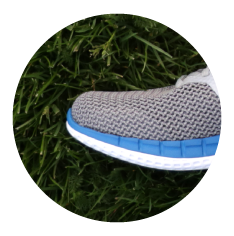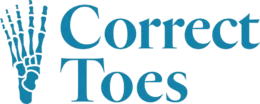Conventional Footwear is the Issue
At birth, human feet are naturally widest at the ends of the toes. This shape is maintained through adulthood in cultures who do not wear conventionally constructed footwear. Unfortunately, in industrialized nations, our footwear does not allow our feet to maintain the natural shape found at birth. Instead, our feet are forced to fit the shape of common footwear, constricting our toes and leading to foot pain and foot issues.




1 | Tapered Toe Box
This unnatural shape squeezes the toes into a point, which can cause deformities and foot problems such as bunions, hammertoes, neuromas, plantar fascia pain and overpronation.

2 | Foot-Shape Toe Box
This shape allows the toes to splay naturally, which encourages vital blood flow, proper nerve function, a wide base for balance and strong arch muscles.



3 | Rigid Sole
This feature acts like a cast, limiting range of motion in the feet. This causes muscle atrophy and makes the feet dependent on extra cushion or orthotics.

4 | Flexible Sole
This feature enables us to respond to the ground with a smooth and balanced gait. A thin, flexible sole works with the foot muscles, not against them, which strengthens the arch muscles.



5 | Rigid Toe Spring
This design can weaken the feet by dorsiflexing the toes (extending the toes upward) and overstretching the plantar fascia. This foot position can lead to shin splints, capsulitis, sesamoiditis, neuromas and plantar fascia pain.

6 | Zero Toe Spring
This design allows the toes to lay flat with the ball of the foot. Proper toe position promotes balance, stability and resistance to injury.



7 | Heel Elevation
This feature, found in many types of shoes, can change the body’s overall alignment. Raising the heel above the ball of the foot can lead to Achilles tendonitis, hammertoes, neuromas, capsulitis, back pain and ankle instability.

8 | Zero Heel Elevation
This feature promotes proper alignment all the way up the spine. A completely flat heel distributes body weight evenly without stressing the toes, ankles, knees and back.



